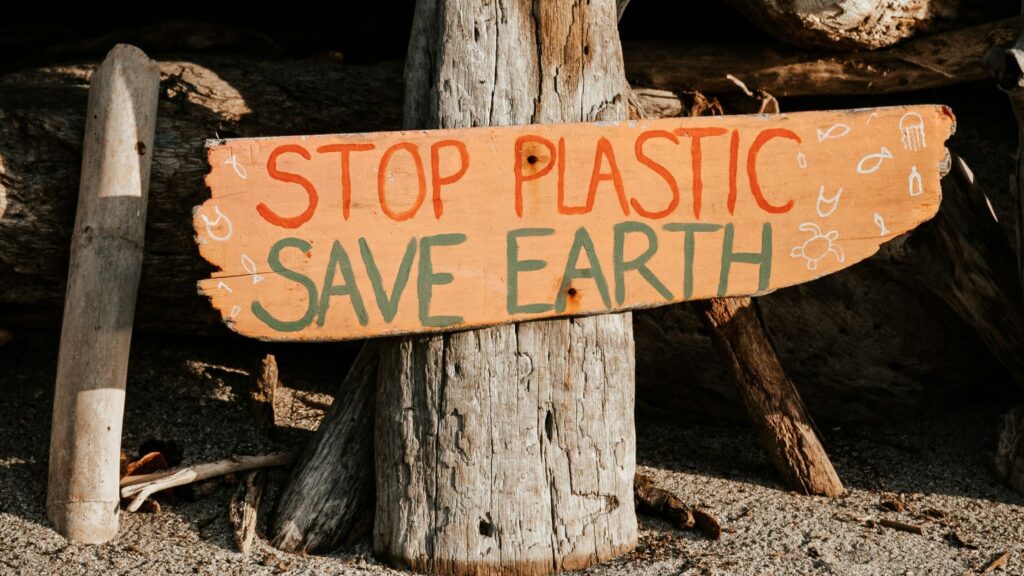The world is facing the problem of plastic, its usage, and management. Due to the increasing demand across various industries, plastic has become a necessary evil for human endeavours. However, despite its numerous advantages and benefits, plastic has permeated every corner of the world, leading to widespread pollution. Even human bodies are not safe due to the increase in microplastics. But all is not lost, as scientists have discovered some of the most fascinating living objects that feed on plastics. These are termed as plastivores and can be an integral part of reducing plastic waste around the globe. So, let’s learn more about plastivores and how they can be potential solutions for plastic pollution.
The Science Behind The Term ‘Plastivore’
These are organisms that can sustain themselves on plastic as a food source. Furthermore, two categories further explain the course of action for plastivores. First are the ones that physically consume plastic, and the second ones are those with the enzymes to degrade it biologically. However, it’s important to distinguish between natural degradation and mechanical degradation if you want to learn more about plastivores.
- Insects.
- Worms.
- Fungi.
- Bacteria.
The Origins of Plastivore Research
The fight against plastic is a long-standing issue. Some are trying to reduce their usage, while others are looking for ways to reduce and reuse. However, scientists took a different approach. It all started when scientists from the Kyoto Institute of Technology and Keio University discovered some species of bacteria feeding on PET. From there, several other institutions pursued organisms with the ability to eat plastic.

Today, various institutions are dedicated to perfecting certain species of waxworms and mealworms to make them more efficient in digesting plastic. Also, studies highlight the significance of microorganisms in recycling plants and landfills. So, there’s a hope for a future where plastic is not a big issue.
Types of Plastivores
These organisms come in all shapes and sizes in a biological context. It includes insects, marine organisms, and even fungi. The majority of these organisms and species exhibit variations in their digestive mechanisms for plastics. However, each has its own advantages that can help address the rising problem.
- Insects (Waxworms and mealworms digesting polyethene).
- Fungal species breaking down polyurethane.
- Plankton, crabs, and fish mistakenly consume microplastics (harmful ingestion).
- Ideonella sakaiensis for PET plastic degradation.
Mechanisms With Plastivores Break Down Plastic
Most of the plastivores digest plastic using chemical processes. These basically include enzymes like PETase and MHETase. Moreover, the physical act of chewing facilitates the enzymatic breakdown, which is efficient for the organism. However, further research is needed on the byproducts of such digestion, particularly regarding their toxicity levels.
4 Environmental Benefits of Plastivores
Many applications can benefit from employing plastivores across various industries. Still, there is a need for more and deeper research to enhance their plastic-eating capabilities. Considering the amount of waste present in the environment, a lot of plastic-eaters are required for even a minuscule change.
- Reducing landfill waste.
- Potential use in ocean plastic cleanup.
- Creating a biological alternative to chemical recycling.
- Supporting circular economy initiatives.
Risks and Ethical Considerations When Working With Plastivores
With the large amount of plastic in nature, there is a potential risk of relying heavily on natural solutions. Plastic-eating organisms sound very promising, but it’s too early to depend on them, especially on a large scale. Furthermore, there is insufficient data on their ability to impact any ecosystem when released widely.
Thus, it’s best to start with small-scale landfills or laboratory experiments to gain a better understanding of the bigger picture.
- Ecosystem disruption?
- Fully biodegradable?
- Genetic modification possible?
Plastivores And Other Plastic Solutions
There’s no need to compare plastic-eating organisms with other methodologies. Instead, it’s important to combine all the different tools and techniques to solve the plastic problem. Therefore, there is an urgent need for research and improvement of existing waste management systems for a better future.
Applications & More
There is considerable potential for plastivores on a global scale. However, there is still a long road ahead for you to find practical applications of plastivores. At present, the most dedicated industries or fields of this sector are given below.
- Plastivore farms for waste treatment.
- Integration into waste management facilities.
- Possible use in cleaning microplastics from water.
- Industrial enzymes derived from plastivores.
Challenges to Overcome in Plastivore Research
There are different hurdles in any particular scientific research. One of the biggest ones is the lack of funding and initiatives. However, to achieve positive results, sufficient capital must be invested in resources for scaling up lab experience. Only then can we find global solutions that are reasonable in comparison to traditional recycling. Simultaneously, any sort of scientific research should not hinder the safety of humans, animals and ecosystems.
The Future of Plastivores
The research on plastivore is promising, but it’s hard to see it mainstream in the next two decades. However, with proper policy support and funding opportunities, the research can facilitate a positive direction with better speed. On top of that, the role of citizens is crucial for discovering new plastivores since it all starts with individuals. This way, it’s not possible to imagine a world where plastic is no longer a waste but a resource.
Final Thoughts on Plastivores
Plastivores are organisms that can sustainably eat plastic, providing potential solutions for reducing pollution worldwide. These organisms can be insects, worms, fungi, or bacteria with the ability to break down plastic using enzymes. Therefore, with proper policy support and funding opportunities, research on plastivores can progress in a positive direction.

